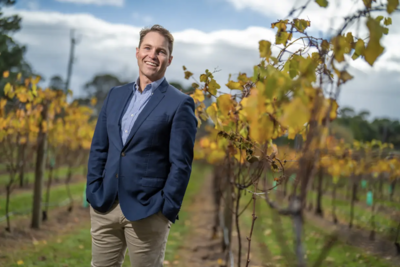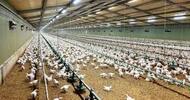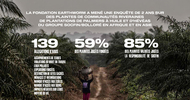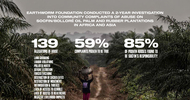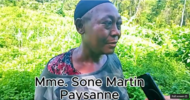Here’s how this fundie is making money from the land
by Gus McCubbing
Australian farmers aren’t the only ones cheering the rocketing price of almonds and beef from the simmering trade tensions between the US and China – a cohort of fund managers is also in the money.
Among them is Warakirri Asset Management’s Steve Jarrott, whose $156 million agricultural fund invests in anything from water rights and crops to orchards and farming infrastructure.
But he’s not just bullish on almonds and beef – both commodities are trading at multi-year highs – he’s also betting on locally grown citrus and berries to benefit from the sweeping US tariffs, along with China’s rising middle class that is looking to buy Australia’s premium produce.
Almonds are the standout after prices hit the highest in a decade last week above $12 per kilogram for the most common type in Australia. That’s because Beijing’s punitive tariffs that it slapped on the US – and more specifically Californian almond producers that provide 80 per cent of global supply – have allowed Aussie farmers to start charging China huge premiums for their produce.
“The trade challenges between China and the US certainly create an opportunity for our almonds to get a stronger position,” Jarrott, whose fund owns a 350-hectare orchard in the Sunraysia region near Mildura, Victoria, told The Australian Financial Review.
“But there’s flow on effects as well – there are some good opportunities in some of these higher-values crops.”
Jarrott’s fund generates returns by leasing out the underlying assets such as crops and vines to producers in a similar vein to an industrial or commercial real estate investment trust.
And almonds are one of Australia’s most valuable horticultural crops, alongside avocados, grapes, and citrus. Last season they generated $762 million in exports, a jump from $570 million the year before.
Rise of China’s middle class
Australia also exported $234.4 million of mandarins, $289.2 million worth of oranges and, despite the country being traditionally a net importer of fresh blueberries, it exported $26.4 million worth of produce last season – a 63 per cent jump on the year before.
It’s for this reason that almonds, alongside citrus and berries, sit at the top of the list of Warakirri’s 12-point rating system, which helps the fund manager to identify the most lucrative agricultural sectors to invest in.
Established more than two decades ago, Warakirri is among a group of local investment managers that have been steering domestic and foreign institutional capital into Australia’s agriculture sector.
Others investing in the space include Macquarie, Roc Partners, New Forests, whose major backers are Japanese, and the Costa family-backed GO.FARM and Growth Farms Australia.
A big part of Jarrott’s bullish bets is the rise of China’s middle class where the country’s per capita GDP has boomed to $US13,700, according to the International Monetary Fund up from $US8200 just ten years ago.
It means that Chinese consumers are increasingly looking for more protein in their diet, which he believes will be a boon for nut producers, while a broader international health kick could be a tailwind for blueberries, now considered a “super food”.
But there’s also a status symbol attached to “Brand Australia”, Jarrott adds, because it’s associated with clean, green and higher quality, which means Australian farmers can demand a hefty premium from overseas markets.
For almonds alone, Australian producers are charging Chinese buyers at least a 10 per cent to 15 per cent premium to the US price, according to Stratamarkets, which tracks the global tree-nut market,
The key for growers, Jarrott says, is to tailor their produce for particular markets – for instance, many Chinese consumers want larger, more attractive-looking fruits to give as gifts, rather than to eat daily.
“Our target crops are berries and citrus,” Jarrott adds.
“That rising middle class in China and the Asian market more broadly means people are looking for more protein or higher-value products, like citrus and berries, as part of their diet balance.”
Value in the fund
In January, the fund bought a 160-hectare planting called Budwood Citrus at Leeton in the Riverina for $15 million. It also leases out the 59-hectare Southbrook Berries in Western Australia to Costa Group.
Warakirri’s diversified agriculture fund returned 5.91 per cent after fees in the year to April. Over three years it returned 5.78 per cent, and 5.98 per cent since inception in May 2020.
Jarrott says the performance shows how consistent a “high-quality REIT-style exposure to agriculture” can be. Still, the performance is below his medium to long-term total return target of 7 per cent to 11 per cent, which assumes asset value appreciation equivalent to inflation plus 1 per cent to 2 per cent over time. That’s in addition to the income yield.
“Our clients see value in the fund for its very low correlation to traditional investment options, as an insulator to market volatility and a source of inflation protection.”
Jarrott grew up on a property near Conargo, in the Riverina, where his family farmed wheat, barley, canola and Angus beef. It was while studying at the University of Melbourne that he had his sliding doors moment – whether to pursue the practical side of agriculture or the financial side? He chose the latter and his brother took over the family farm.
“I still get my hands dirty on the farm when I can, whether it’s some work in the cattle yards or on the tractor,” Jarrott says. “My brother and I have a good balance and make a good team.”
After long stints at AAG Investment Management and then global agriculture asset manager Westchester Group, Jarrott joined Warakirri in 2019.
One of the perks of the gig, he quips, is investing in vineyards, so he gets to visit and taste the offerings from some of Australia’s best winegrowing regions.
Wine makes up 34 per cent of fund, with nuts comprising 19 per cent, fruit 18 per cent, vegetables 16 per cent, and agricultural infrastructure 13 per cent.
Warakirri in 2022 paid about $55 million for the 110-hectare Jose Chromy winery, cellar door, restaurant and vineyard near Launceston in Tasmania, which it leases out to ASX-listed Endeavour under a long-term agreement.
He also paid $22 million in 2023 to acquire the Amadeus Vineyard in the Margaret River region, three hours south of Perth, and the Smithbrook Estate in Pemberton in the state’s south-west.
Both produce premium grapes for Fogarty Wine Group brands, which was acquired by Warakirri with a 15-year lease to Margaret River Wine Production, a subsidiary of FWG.
His favourite wineries out of the fund are Lowestoft and Tolpuddle in Tasmania, as well as Leura Park and By Farr near his home in Geelong.
“Wine tasting is a fun part of the role and certainly beats walking around wheat fields chewing on grains.”


